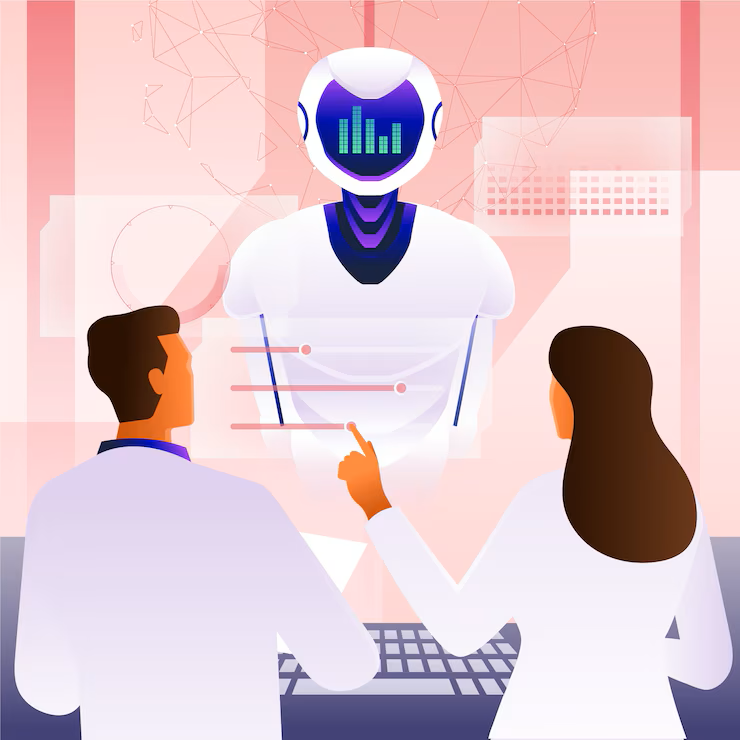The use of AI has expanded as a result of quality interventions and predictions. Its use in delicate circumstances is still questioned, nevertheless, due to a lack of comprehension of the data. Understanding the AI prediction mechanism would be a preferred human innovation when success, money, and life are on the line.
Explainable AI has been created using a variety of methods in response to the demand. Even though explainable AI has its own set of advantages, difficulties, and practical uses, learning more about it helps you anticipate how AI will advance in the future. To get you acquainted with the idea, the essay describes explainable AI features.
Explainable AI: What is it?
The majority of firms have been replaced by artificial intelligence. Due to the lack of transparency in the decision-making process, it is still dubious that AI will be used blindly for important judgments. In order to address the issue, people have created explainable AI, which allows humans to obtain explanatory outcomes from AI systems while preserving transparency over its operations.
When integrated into machine learning systems, artificial intelligence (AI), often referred to as XAI, will be able to explain the reasoning behind decisions, show how they operate, and highlight their advantages and disadvantages, all of which will help determine how reliable they are. In the future systems, it is anticipated that an explainable model and an explanation interface will be used.
What Makes Explainable AI Vital?
The process used to arrive at a decision is not understood or explained by widely used AI models. They are now referred to as “black boxes” as a result and one of the best explainable ai s.
Explainable artificial intelligence (AI) offers a solution to this problem and is significant for the following reasons:
- It characterizes decision-making results and helps with precision, transparency, and fairness.
- Aids in the organization’s cultural adaptation and adoption of a responsible attitude.
- Reduces the likelihood of biases, unethical behavior, and error detection for instructional reasons and to help solve technological issues.
- Boosts cooperation and AI adoption rates for jobs like creative thinking and emotional intelligence
Methods for explainable ai
Explainable AI is curatable by humans in a variety of ways. Below is a list of the many of them:
A system known as SHAP (Shapley Additive exPlanations) allocates values or offers a means of equitably allocating each feature’s “contribution.” It aids in distinguishing between baseline predictions and the models. It can be used, for example, to comprehend the rationale behind loan acceptance or rejection.
To obtain an approximation of the behavior of a complex model on a particular instance, LIME (Local Interpretable Model-Agnostic Explanations) develops a more straightforward and interpretable model. It helps determine the cause of particular predictions and black-box models. Fit a linear model, for example, to explain how a deep neural network decides which images to classify.
Explainable AI’s advantages
There are numerous advantages to explainable AI, including
- lowers the cost of errors, which is particularly significant in domains that require quick decisions, such as business, law, medicine, and finance.
- Reduces prejudice, mistakes, and the effect they have on companies.
- Inference is helpful in user-critical systems and tends to boost the system’s confidence.
- Effective model performance by being aware of its shortcomings
- Making well-informed decisions enables the human brain to be used for more optimal outcomes.
Difficulties in Making AI Explainable
Even though there are several methods for creating Explainable AI, humans still face a number of obstacles, including:
- Lack of awareness regarding the bias in training data that could affect its judgments
- A person’s perspective determines how fair a choice is, and this might differ from person to person.
- A decrease in accuracy is linked to the simplification of complexity. XAI seeks to streamline the methods and conclusion, which could lead to errors.
- The increased complexity of Deep Learning makes it difficult to interpret its many layers.
- It can be challenging to determine the explanation for a large range of data since it may call for specific methodologies.
Applications of Explainable AI (XAI) in the Real World
Explainable AI has the potential to be widely used in a variety of industries with effective results. Among the most well-known instances of Explainable AI are:
Insurance XAI is able to forecast specific customer attrition, deliver seamless customer experiences, and provide transparency for customers regarding pricing adjustments. Payment exceptions, cross-selling, customized pricing, fraud detection, and improving client interaction are some of the specific areas that call for implementation.
Marketing AI can create marketing strategies that better comprehend cultural adaptations, pinpoint the shortcomings of existing AI models, and reduce these and related risks to produce more reliable outcomes.
Medical Care
Drug design is an important procedure that costs money and time. Furthermore, despite advances in study, our understanding of human functioning is still incomplete. AI is able to produce mathematical simulations and models that can offer explanations and possible leads. Additionally, it can more accurately and responsibly forecast the occurrence of health issues, enabling humans to rely on AI.
Conclusion
Explainable AI strategies are used to more rapidly identify mistakes or point out areas that need development. As a result, monitoring and maintaining AI systems becomes simpler for machine learning operations (MLOps) teams in charge of them.
Learn more about these methods by signing up for Simplilearn’s Artificial Intelligence. Do suggest some trending topics and information with us at robotsintelli.

